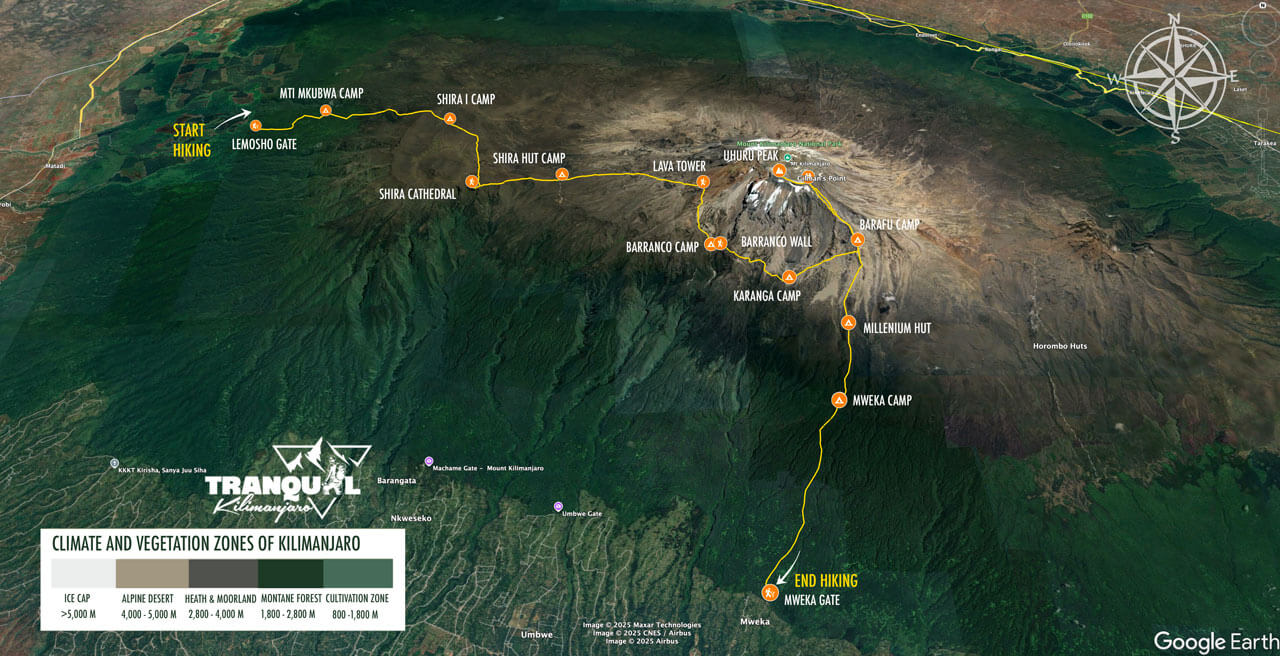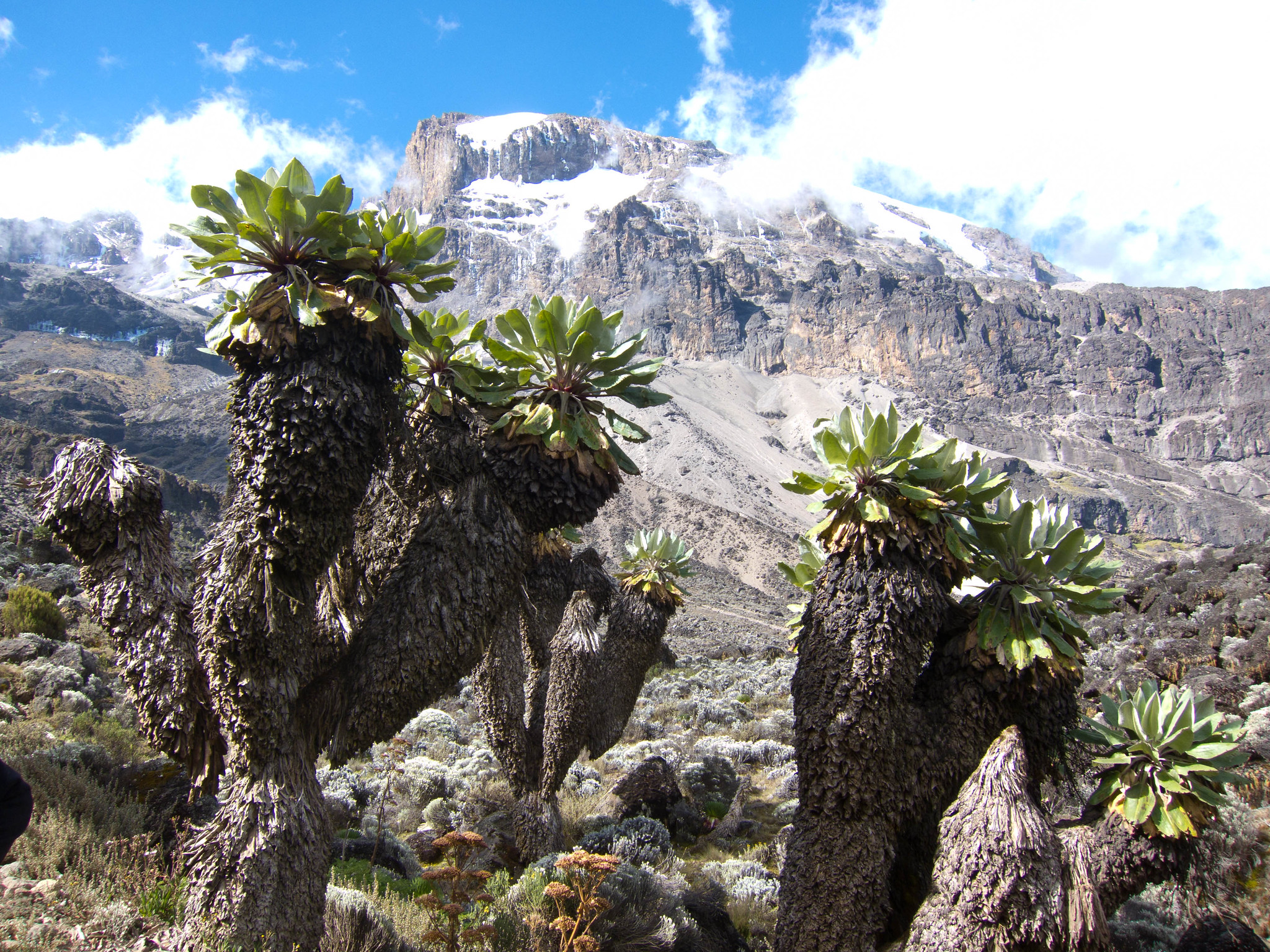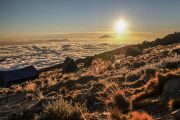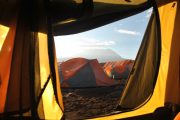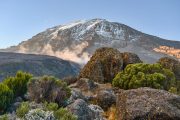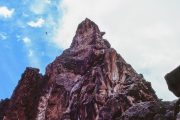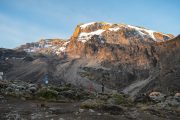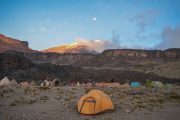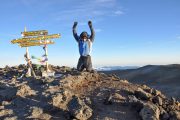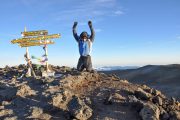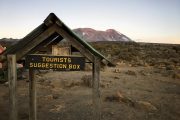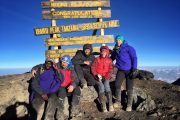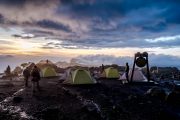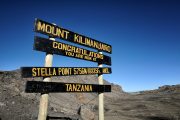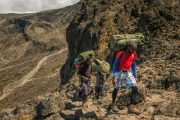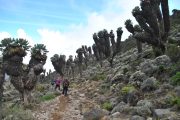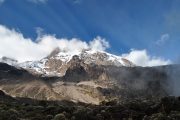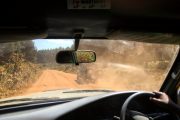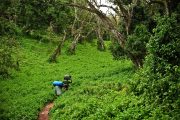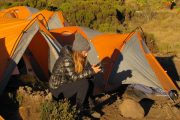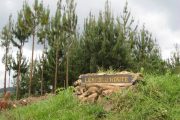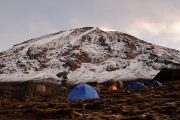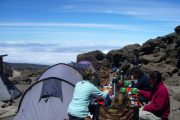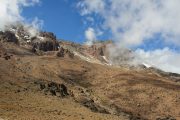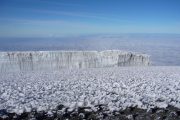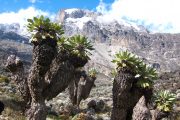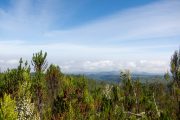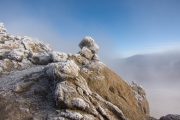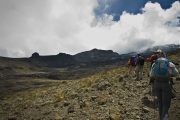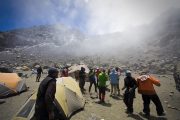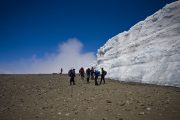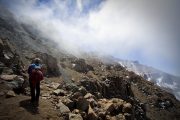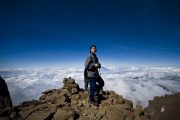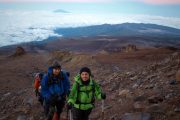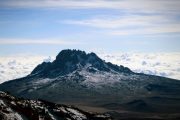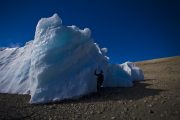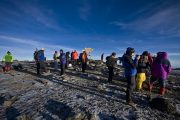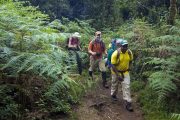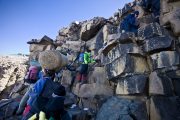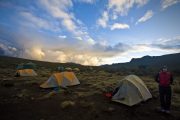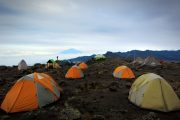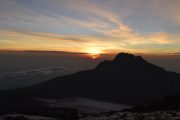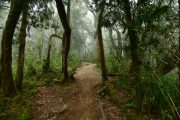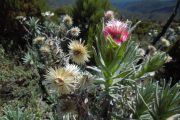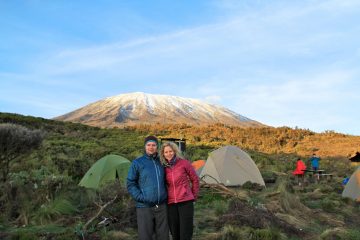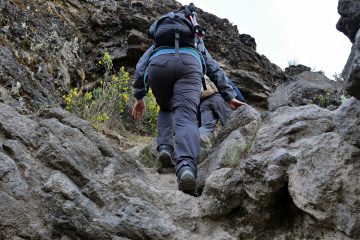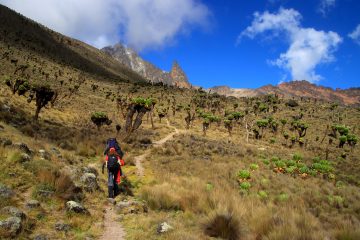Difficulty:
The Lemosho route is frequently considered one of the more manageable paths to the summit of Kilimanjaro thanks to its extended timeline, which facilitates better acclimatization. Nonetheless, climbers will still encounter the Barranco Wall and endure a steep climb during the summit night. The 8-day itinerary is known for its high success rate because of an extra day that allows for rest before the final ascent, enabling you to arrive at base camp by midday for nourishment and rest prior to the midnight summit push. While no technical climbing skills are necessary, being in good physical condition is crucial. For preparation, you might want to explore the mountaineering coaching programs offered by Kate Sielmann.
Food & Drink:
Proper nutrition and hydration are vital on Kilimanjaro, especially since high altitudes can reduce your appetite. Our chef has designed meals that are not only appealing but also packed with nutrition to keep your energy levels up. You’ll enjoy daily servings of fresh produce, with meat available at the start of the trek and replenished at Karanga Camp on southern routes. After summiting, indulge in an “All Day English Breakfast” at base camp, where you can specify how you like your eggs. Before you leave, experience local Tanzanian flavors with dishes like Njegere and Machalari.
Accommodation:
Your travel plan includes hotel stays in Moshi with details on meals provided. For those arriving from a safari, we arrange lodging in Arusha to cut down on travel time. Be prepared for possible interruptions in water and electricity, which could affect hot water availability. On the mountain, you’ll stay in high-quality Mountain Hardwear Trango 3 tents designed for extreme conditions, though they’re not spacious enough to stand in. Meals are served in a comfortable mess tent, and a toilet tent with toilet paper is provided.
Transport:
We guarantee top-notch vehicles and drivers for your transportation needs. Be aware that rear seatbelts aren’t always standard in Tanzania, and police checks are routine. If you have any concerns about the vehicle or driver, please discuss them with the driver or our local team immediately.
Luggage:
Climbing Bag Weight: Porters are limited to carrying 15kg per bag, including your sleeping bag. Bags are weighed before departure; items over this limit must be left behind or you can hire extra porters at $25/day.
Plastic Bag Ban: Single-use plastic bags are prohibited in Tanzania since June 1, 2019. Please use eco-friendly options like packing cubes. However, zip-lock bags for liquids are still permitted in carry-on luggage.
How Do I Get There?
From the UK or US, flights to Kilimanjaro International Airport (JRO) are available with KLM, involving a stopover in Amsterdam. Our tours commence in Moshi, close to JRO, with arranged transport. It’s wise to take a rest day after your flight. Avoid flights through Nairobi due to potential hassles. Airlines like Turkish, Emirates, and Qatar also fly into JRO, with differing levels of service. For further travel, connecting flights to Zanzibar from Dar es Salaam are advisable.
Travelling Responsibly:
We offset the carbon footprint of our trips, excluding flights. Utilize our eCO2 calculator to offset your flight’s emissions.
Fitness and Training:
Consult our Kilimanjaro Training Guide for tips on getting physically ready for the climb.
Budget & Change:
Tanzanian Shillings can’t be obtained before arrival, so bring new, crisp US dollars. For local currency, use ATMs or exchange at the airport. Ensure your bank is informed about your international card use to avoid transaction issues.
Tips:
We adhere to the tipping recommendations from the Kilimanjaro Porters Assistance Project: $6-10/day for porters, $20/day for guides, and $12-15/day for assistant guides and cooks per group. Additional tips for porters helping during the summit night are appreciated. Tips are handed out at the hotel post-climb for safety, using provided envelopes for an organized distribution.

